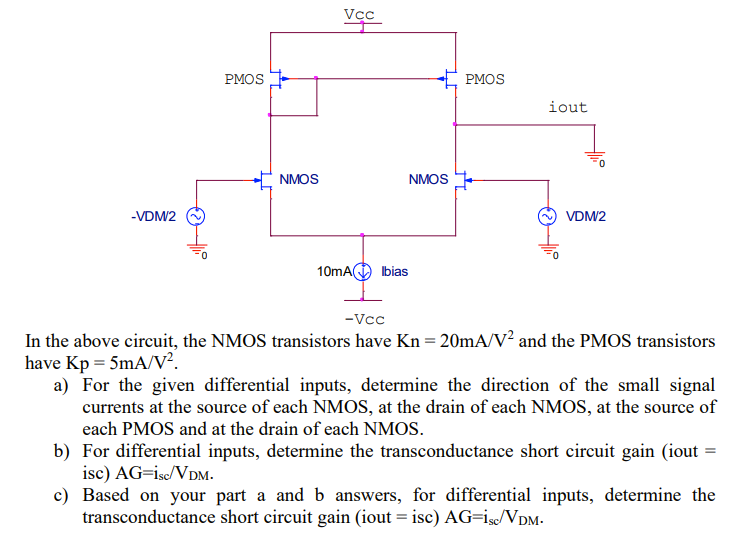In the above circuit, the NMOS transistors have Kn = 20 mA/V2 and the PMOS transistors have Kp = 5 mA/V2. a) For the given differential inputs, determine the direction of the small signal currents at the source of each NMOS, at the drain of each NMOS, at the source of each PMOS and at the drain of each NMOS. b) For differential inputs, determine the transconductance short circuit gain (iout = isc) AG = isc/VDM. c) Based on your part a and b answers, for differential inputs, determine the transconductance short circuit gain (iout = isc) AG = isc/VDM.
